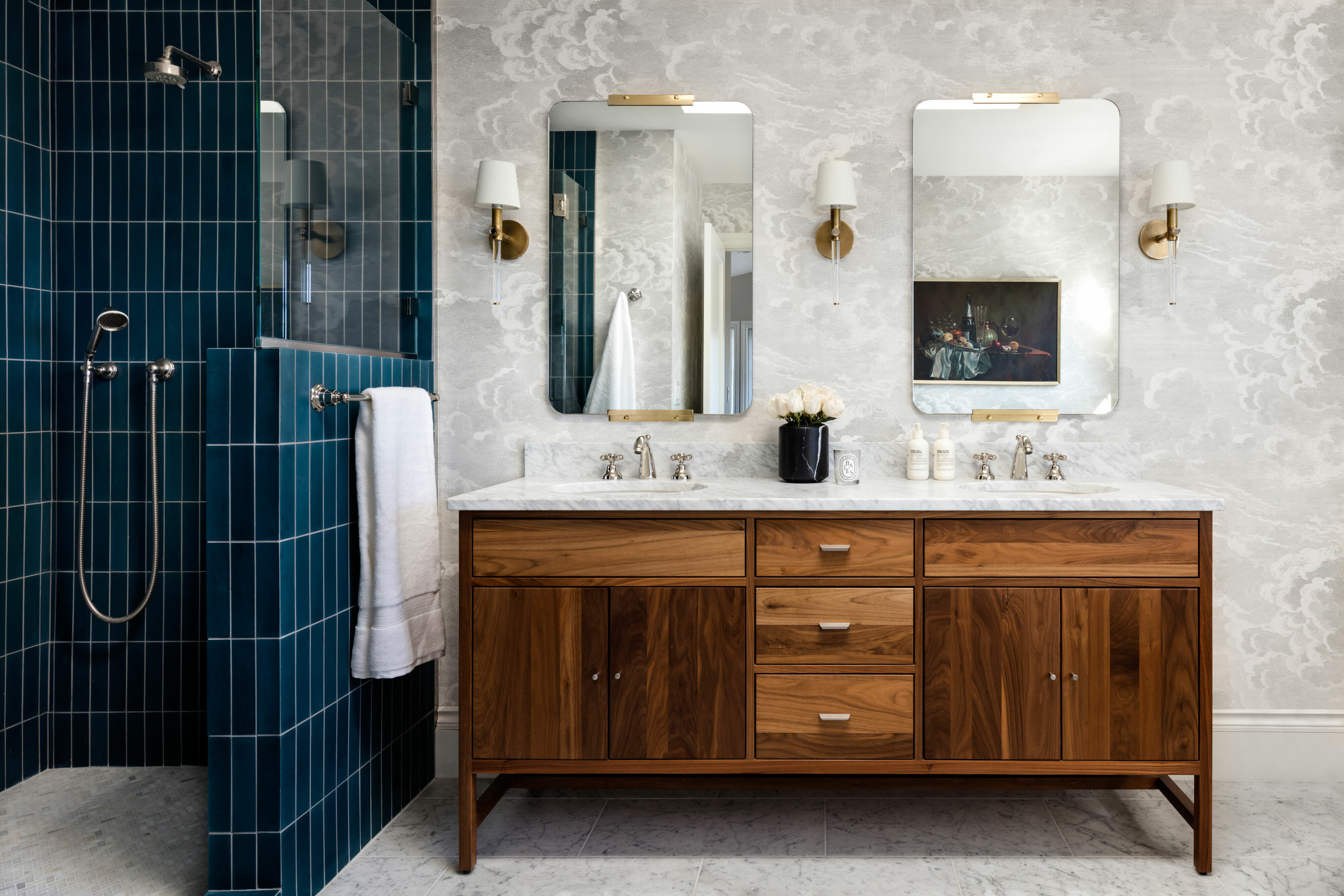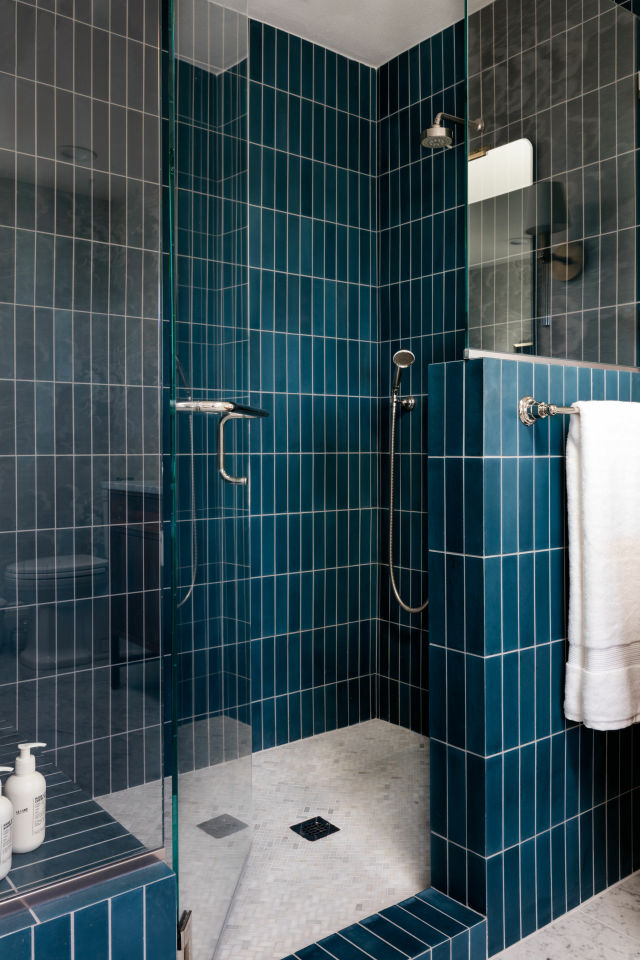
The Statement Shower: A New Approach to Cement Tile
Nobody exactly knows how to describe the color of these bathroom tiles. Cobalt is too bright; teal lacks gravitas. Call them navy blue and you miss the deep green undertones.
While monikers might fail this particular hue, it succeeds, wildly, in Molly Alexander’s en suite bathroom. The shower is a bold stroke in a space otherwise given to tasteful neutrals and subtle details like cloud-patterned wallpaper.
Alexander sought out Kelly Lyons, cofounder of K&L Interiors, after upsizing from her previous home in Queen Anne. When Alexander and her family moved into this residence in Magnolia, Lyons oversaw expansive cosmetic changes. “Often people in the Pacific Northwest gravitate toward neutral and wanting to play it safe,” says Lyons. Alexander was open to more daring ideas. “And you don’t often get that.”
Picking bathroom tile was a small part of this project, but one that presents infinite options for color, material, shape, and size (and we haven’t even begun to discuss grout colors). Even classic subway tiles become less straightforward when you ponder the dozen different patterns they can form on a wall. Tile’s breadth of possibilities makes picking paint colors feel easy by comparison—and unlike paint, fixing regrettable tile decisions requires a pry bar.
Ceramic tile (like that time-tested subway style) is the bulletproof bathroom standard, at least for walls, but it didn’t take Lyons long to alight on cement as an alternative. These porous tiles have made memorable design cameos over the past decade, often in black-and-white or bold patterns and often in high-design settings like hotels or restaurants—or in homes whose owners are comfortable committing to a mega statement in the bathroom, kitchen, or entry.

Molly Alexander's cement tile shower may require extra upkeep but it makes up for it with statement-making prowess.
Image: Miranda Estes
“Now we’re using it in a different fashion,” says Lyons of cement. This material is naturally porous, imbuing a solid-color tile with subtle shadings and visible texture. Like marble, it’s guaranteed to patina and wear over time—that’s the point. “It’s going to show that you lived in it,” says Lyons. “I like the beauty of that.” Alexander and her husband were an immediate yes on these tiles from Los Angeles–based Zia Tile (which technically lists them as “midnight”).
Unlike its ceramic or porcelain counterparts, cement often requires some maintenance. Alexander’s shower has done daily duty for two years now; she’s due to apply her first coat of the biennial sealer recommended for a material this porous. The saturated hue may be dark as an inkwell, but it gains context when you factor in the glimpse of blue from the bedroom’s view of Elliott Bay, says Lyons. Given our natural habitat, blues and greens can act as neutrals—as long as you pick the right shade.
This particular design statement happened in a part of the house that isn’t exactly a hot spot for entertaining. When Alexander shows visitors her home, the conversation often turns to that water view: “Then we take them upstairs and walk them right [to] the bathroom. It’s one of our favorite rooms.”
Before You Go Big
When contemplating broad applications of color—in a paint, a tile, even a swatch of fabric—designer Kelly Lyons likes to take the sample outside. “To me, sunlight naturally enhances whatever the color is,” she says. Even if the actual room will never see this level of brightness, this exercise gives Lyons a better idea of how this color will feel in a larger expanse.




